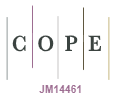Poetic spaces as mediation for narratives of oneself
DOI:
https://doi.org/10.5585/eccos.n53.16658Keywords:
Biographical studio, Self-mediality, Poetic spaces, Formation, Aesthetic narratives.Abstract
This article is both a report and an analysis of the teaching experience in the process of gestural and imagery creation, as part of the discipline “Self-Narratives and Learning in Art” in the Graduate Program of the School of Fine Arts at the Federal University of Minas Gerais (UFMG), during the second semester of 2019. As for methodology, we analyzed the experience reports made by the students and the recall of the experiences they have had. The class consisted of 12 students from the areas of Acting, Dancing, Music, Visual Arts, Fashion and Audiovisual, among postgraduate students, students of isolated subjects, in addition to some students from the PROFARTES – Professional Master’s Degree. The role of Art and multiple expressive languages in the production of self-narratives in contexts of research and training highlights the relevance of aesthetic and artistic devices in biographical mediality. Based on the proposal of the biographical studio, the images, objects and bodily work are presented as mediating instruments that enhance, not only the activation of the memory of what was experienced, but the matter and the shape of an aesthetic narrative. This work reports the need to open spaces and times for the students' own ways of expression, wrapped in multiple languages and aesthetic materialities. This work also sheds light on the teaching experience that gives students the opportunity to examine the process experienced in Arts, throughout their lives. Methodologically, it privileges narratives in images, with pictorial elements and with the body in movement, where the memory of the experiences is amplified in the thinking process to understand the practices of the self in the revealed existence.
Downloads
References
ALBANO, Ana A. Histórias de iniciação na arte. In: ORMEZZANO, G. (org.). Educação estética: abordagens e perspectivas. Brasília: MEC; INEP, 2007. p. 85-96.
BONDIA, Jorge Larrosa. Notas sobre experiência e o saber de experiência. Revista Brasileira de Educação, s/v, n. 19. p. 20-28, jan./abr. 2002.
CARERI, Francesco. Walkscapes: o caminhar como prática estética. São Paulo: G. Gil, 2013.
DELORY-MOMBERGER, Christine. A condição biográfica: ensaios sobre a narrativa de si na modernidade avançada. Tradução: Carlos Galvão Braga; Maria da Conceição Passeggi; Nelson Patriota. Natal: EDUFRN, 2012.
DELORY-MOMBERGER, Christine. A pesquisa biográfica em situações de diálogos. COLÓQUIO INTERNACIONAL DA PESQUISA BIOGRÁFICA EM EDUCAÇÃO, Paris, 2019, Maison des Sciences de l’Homme Paris Nord. Anais... Paris: Centre de Recherche Interuniversitaire Experice, out. 2019. Disponível em: http://grifars.ce.ufrn.br/wp-content/uploads/2019/04/Colo%CC%81quio-International-da-Pesquisa-Bioga%CC%81fica-em-Educac%CC%A7a%CC%83o-Paris-out_2019-1-1.pdf. Acesso em: 11 nov. 2019.
DELORY-MOMBERGER, Christine. Formação e socialização: os ateliês biográficos de projeto. Educação e Pesquisa, v. 32, n. 2, p. 359-371, mai./ago. 2006.
OSTETTO, Luciana Esmeralda. KOLB-BERNARDES, Rosvita. Modos de falar de si: a dimensão estética nas narrativas autobiográficas. Pro-Posições, v. 26, n. 1(76), p. 161-178, jan./abr. 2015. Disponível em: http://www.scielo.br/pdf/pp/v26n1/0103-7307-pp-26-01-0161.pdf. Acesso em: 11 nov. 2019.
OSTETTO, Luciana Esmeralda. Para encantar, é preciso encantar-se: danças circulares na formação de professores. Cadernos Cedes, v. 30, n. 80, p. 40-55, jan.-abr. 2010. Disponível em: http://www.scielo.br/pdf/ccedes/v30n80/v30n80a04.pdf. Acesso em: 11 nov. 2019.
REY, Sandra. Caminhar: experiência estética, desdobramento virtual. Revista Porto Arte, v. 17, n. 29, p. 107-121, nov. 2010.
RINALDI, Carla. Diálogos com Reggio Emilia: escutar, investigar e aprender. Tradução: Vania Cury. 1. ed. São Paulo: Paz e Terra, 2012.
WARCHAUER, Cecília. A roda e o registro: uma parceria entre professor, alunos e conhecimento. Rio de Janeiro: Paz e Terra, 1993.
Downloads
Published
How to Cite
Issue
Section
License
Copyright (c) 2020 EccoS – Revista Científica

This work is licensed under a Creative Commons Attribution-NonCommercial-ShareAlike 4.0 International License.
- Abstract 701
- PDF (Português (Brasil)) 510






